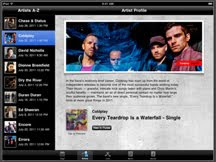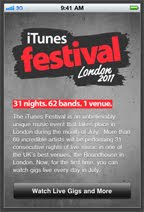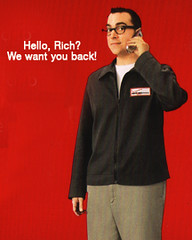Barry Moltz is a pretty smart guy. But he really blew it when writing up why business owners don't want to be like Steve Jobs for the Open Forum by American Express. Sure, with a broad brush stroke, we can call Moltz right — it's one thing to be influenced by someone, it's another to mimic them.
So he's right in saying that small business owners don't need to learn how to be "just like Steve Jobs," but not for any of the reasons included on his list. The real takeaway from Jobs is that you never want to compromise being yourself. And Jobs, if he was good at anything, was being himself.
Rehashing the list: Where it's on and where it's off.
Demand More From Your Employees. Moltz took exception to the fact that Jobs frequently told employees that they could never do anything right. Some of them were even afraid to take an elevator ride with him for fear of losing their job by the time they reached their floor. Moltz says it's better to be just be blunt (but not lambasting them or embarrassing them in meetings).
But there is another dynamic here that is missing. Jobs operated from an position that no matter how good something was, it could always be better. He was right. The challenge that many small business owners have is that they are always trying to reach some place of complacency where they can just go with the flow. That place doesn't exist. Maybe Jobs was too harsh for some tastes, but people knew where they stood. Those who excelled also developed a knack for fearlessness, which is critical for creativity.
Tell Customers They Are Wrong. Jobs also had a knack for telling customers that they were wrong, sometimes firing off emails in the middle of the night saying so. Moltz says the lesson is to cool off before firing away an email. The advice is mostly right. I tell people the same thing all the time, except when they are passionate. In those cases, I tell them to draft it up exactly what they are thinking as long as they don't hit the send button until they can read it fresh in the morning.
Still, I think the bigger lesson here is that sometimes you have to tell customers they are wrong. The quickest way to lose a customer is do exactly what they want when it's the wrong way and watch it fail. Communication people, in particular, do this all the time. They think they are preserving an account by doing what customers tells them to do (even if they know its wrong). Then they lose the account anyway because the customer holds them accountable to the outcomes. The grief isn't worth it.
Claim Your Employee Ideas. Moltz relates how Jobs frequently reviewed employee ideas and presented them on as his own. Moltz says it is always better to share credit when credit is due.
Jobs was hardly the only person to do it. Andy Warhol and Charles Eames most immediately come to mind, which is why I have mixed feelings about placing idea ownership in the black and white column.
While Jobs' style is not mine own, many small business owners could use a dash of it. It isn't necessarily appropriate to steal ownership, but neither is it appropriate that small business owners undervalue themselves. They create the environment, fund the work, inspire the direction, etc.
Never Settle For Less Than You Want. Moltz sets up the lesson by showing Jobs as uncompromising on two points — both in business and smallest details. He wasn't afraid to break bad contracts and cared about the inane (even if it what kind of flowers are in a hotel room). Moltz partly agrees, saying that you ought to never stick to a contract that doesn't meet your needs and ought to push people past their limits. But he wants to negotiate resolution and leans light on the details.
I've met a few self-made millionaires and billionaires. All of them sweat detail. I know one who won't eat an orange unless it measures out to perfect circumference. I often wonder if maybe they are right. Maybe those inane details matter. Or maybe you need to decide if they matter to you.
More importantly, small business owners sometimes get mixed up anytime the word "negotiation" comes up in a conversation. It's because many small business owners have their words mixed up. "Negotiate" and "compromise" are not the same thing. You can negotiate a win-win contract. But "negotiating resolution" smacks of compromise, which is a settlement of mutual concessions.
The last point is probably the biggest takeaway of all. Compromises are often lose-lose propositions, with both parties losing, even if one party thinks they are winning. Small business owners can't afford to play that game. If you can't negotiate a win-win with someone but you can with someone else (assuming quality, price, etc. are all equal), you have to move forward. If you compromise or force someone else to compromise, then you're likely headed in the wrong direction. Never settle, but never ask someone else to settle either.
So he's right in saying that small business owners don't need to learn how to be "just like Steve Jobs," but not for any of the reasons included on his list. The real takeaway from Jobs is that you never want to compromise being yourself. And Jobs, if he was good at anything, was being himself.
Rehashing the list: Where it's on and where it's off.
Demand More From Your Employees. Moltz took exception to the fact that Jobs frequently told employees that they could never do anything right. Some of them were even afraid to take an elevator ride with him for fear of losing their job by the time they reached their floor. Moltz says it's better to be just be blunt (but not lambasting them or embarrassing them in meetings).
But there is another dynamic here that is missing. Jobs operated from an position that no matter how good something was, it could always be better. He was right. The challenge that many small business owners have is that they are always trying to reach some place of complacency where they can just go with the flow. That place doesn't exist. Maybe Jobs was too harsh for some tastes, but people knew where they stood. Those who excelled also developed a knack for fearlessness, which is critical for creativity.
Tell Customers They Are Wrong. Jobs also had a knack for telling customers that they were wrong, sometimes firing off emails in the middle of the night saying so. Moltz says the lesson is to cool off before firing away an email. The advice is mostly right. I tell people the same thing all the time, except when they are passionate. In those cases, I tell them to draft it up exactly what they are thinking as long as they don't hit the send button until they can read it fresh in the morning.
Still, I think the bigger lesson here is that sometimes you have to tell customers they are wrong. The quickest way to lose a customer is do exactly what they want when it's the wrong way and watch it fail. Communication people, in particular, do this all the time. They think they are preserving an account by doing what customers tells them to do (even if they know its wrong). Then they lose the account anyway because the customer holds them accountable to the outcomes. The grief isn't worth it.
Claim Your Employee Ideas. Moltz relates how Jobs frequently reviewed employee ideas and presented them on as his own. Moltz says it is always better to share credit when credit is due.
Jobs was hardly the only person to do it. Andy Warhol and Charles Eames most immediately come to mind, which is why I have mixed feelings about placing idea ownership in the black and white column.
While Jobs' style is not mine own, many small business owners could use a dash of it. It isn't necessarily appropriate to steal ownership, but neither is it appropriate that small business owners undervalue themselves. They create the environment, fund the work, inspire the direction, etc.
Never Settle For Less Than You Want. Moltz sets up the lesson by showing Jobs as uncompromising on two points — both in business and smallest details. He wasn't afraid to break bad contracts and cared about the inane (even if it what kind of flowers are in a hotel room). Moltz partly agrees, saying that you ought to never stick to a contract that doesn't meet your needs and ought to push people past their limits. But he wants to negotiate resolution and leans light on the details.
I've met a few self-made millionaires and billionaires. All of them sweat detail. I know one who won't eat an orange unless it measures out to perfect circumference. I often wonder if maybe they are right. Maybe those inane details matter. Or maybe you need to decide if they matter to you.
More importantly, small business owners sometimes get mixed up anytime the word "negotiation" comes up in a conversation. It's because many small business owners have their words mixed up. "Negotiate" and "compromise" are not the same thing. You can negotiate a win-win contract. But "negotiating resolution" smacks of compromise, which is a settlement of mutual concessions.
The last point is probably the biggest takeaway of all. Compromises are often lose-lose propositions, with both parties losing, even if one party thinks they are winning. Small business owners can't afford to play that game. If you can't negotiate a win-win with someone but you can with someone else (assuming quality, price, etc. are all equal), you have to move forward. If you compromise or force someone else to compromise, then you're likely headed in the wrong direction. Never settle, but never ask someone else to settle either.





































